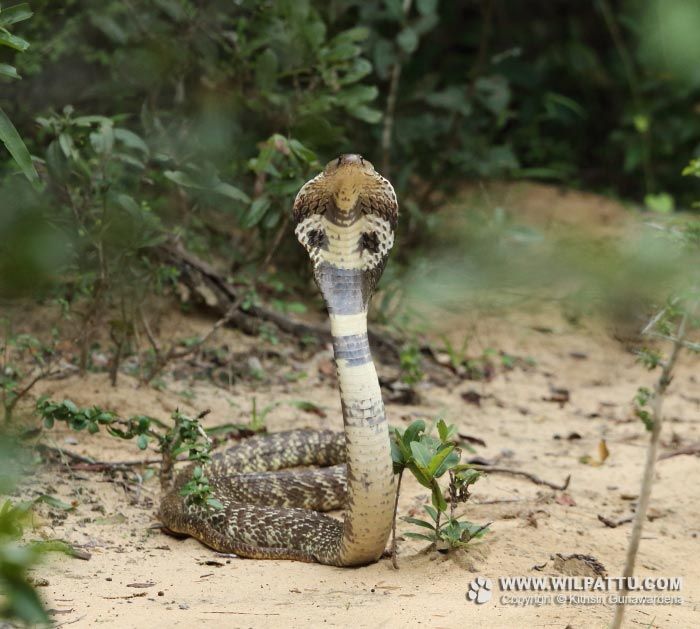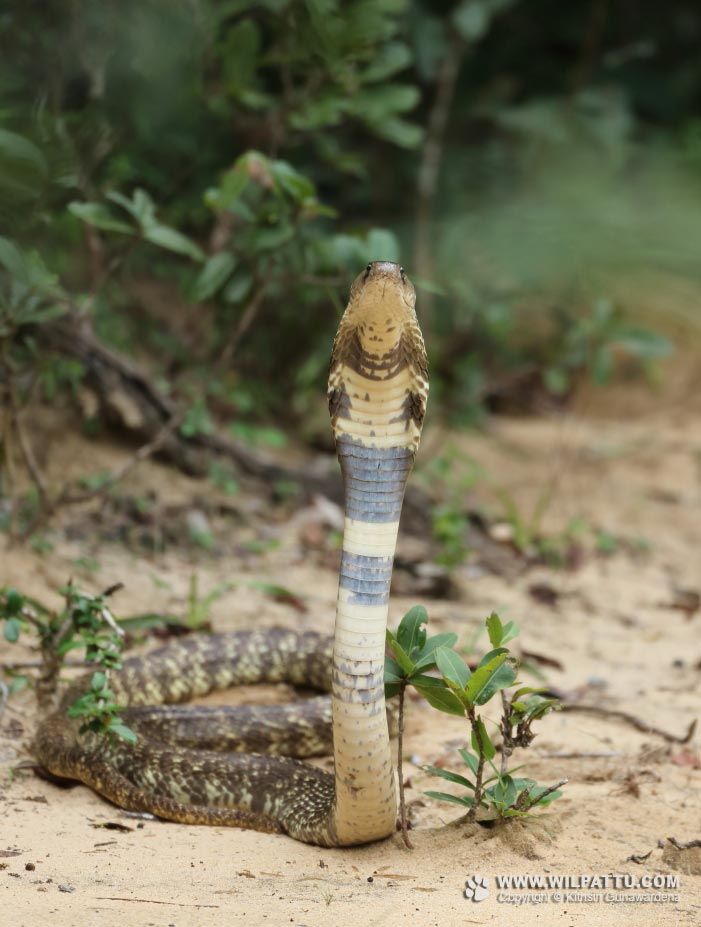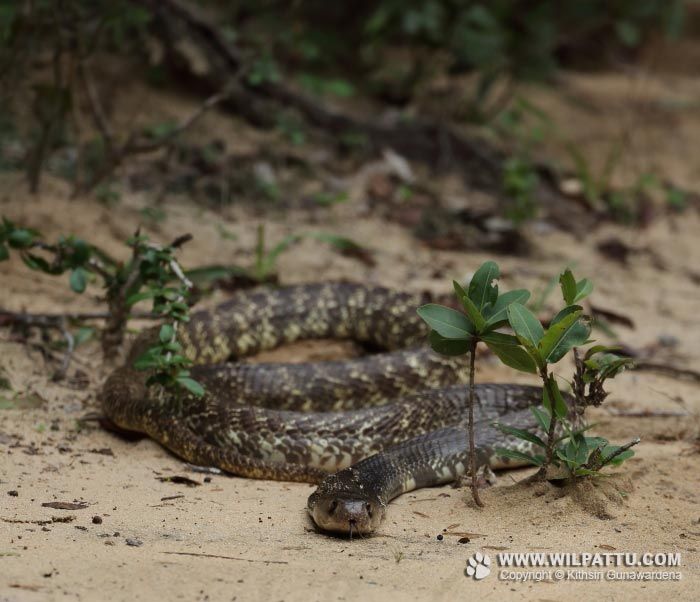
Reptiles ‹‹ Go Back
This is a highly venomous snake, which is capable to producing a dramatic threat posture by spreading its neck ribs to form a flattened, widened hood. It is found throughout the country except for the highest hills. It is native to the Indian Subcontinent and is found in India, Pakistan, Bangladesh southern Nepal and Sri Lanka. The word cobra means snake in Portuguese.
The conservation status of this species is regarded as Least Concerned (National Red List 2012).
This is one of the few species of terrestrial snakes found in the country with venom potent enough to cause a human death if not treated with anti venom. These snakes will often hiss and strike when cornered or provoked but will always try to avoid human beings. Given the opportunity they will spread their hoods as a warning and escape to safety. Unless they are handled or stepped upon these snakes will usually strike or bite to threaten a human but will not inject venom. However if a cobra bite has taken place the best action is to calm the patient by informing him or her that anti venom can reverse the effects of cobra venom, wash the location of the wound with some or an antiseptic and rush the patient to a hospital.
The Cobra is a very important member of our bio diversity heritage as they prey on a large number of rodents and maintain the balance in our eco systems. Considering its importance it is declared as a protected species in India under the Indian Wildlife Protection Act (1972).
I have seen this species at many localities in the wet intermediate and dry zone areas in the country. I have seen on a few occasions in the city of Colombo as well. It is still commonly found in areas such as Nawala, Kotte, Maharagama, Kottawa, Battaramulla and Attidiya. I have rescued many individuals that had entered human dwellings from the suburbs of Colombo and once from a house in Colombo 7. In the north I have seen it in Jaffna peninsula and the Mannar Island.
It is a very common species in Wilpattu and I have seen at many locations through out the park.



